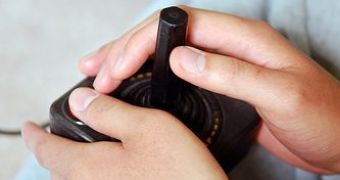ESA’s Business Incubation Center developed an unmanned aircraft that is guided by satnav and can provide fast monitoring of land areas and disaster zones.
This new system uses independent micro-air vehicles, or MAVs, with a wingspan of less than two meters that inspect different areas.
It was developed by a German start-up company called MAVinci, and Johanna Born, the company's CEO explains:
“At the moment, the remote-sensing market uses mainly manned airplanes, but they are expensive and not always available.
“Our MAVs are cost-efficient, available at short notice and easy to use for surveillance of development areas, construction sites, disaster zones and waste disposal sites, just to mention a few.
“They can carry visual and thermal cameras or other customer-specific measuring equipment.”
The company's headquarters are at ESA’s Technology Transfer Program Office at the Business Incubation Center Darmstadt, Germany, and the MAV benefited from the expertise of ESA engineers on attitude-determination algorithms and exploiting satnav data.
For the calibration of the optical camera on every plane, MAVinci needed the help of ESA's optical lab at ESTEC in the Netherlands.
ESA Flight Dynamics Engineer Michael Flegel, explains some of the mechanisms of the MAVs:
“The principles for the attitude determination of satellites and for autonomous aircraft such as MAVincis are identical, only the scale is different.
“Where a satellite might use the measured direction of the Sun, Earth or of known star patterns, the MAV aircraft will use the local magnetic field direction, the direction of ‘down’ and similar local quantities.
“Obtaining meaningful information from the data is an art and the expertise can be applied to both satellites and spacecraft alike.”
The aircraft has a planned track to follow and it is controlled by the autopilot from takeoff to landing, when it returns with images from the target area.
Still the airplane is not completely by itself, as a safety pilot follows it by radio, from the ground, in case something happens and he needs to take over the control.
Until now, the technology was used to help farmers in Andalusia, as there is a severe erosion problem there, as well as in many areas in southern Europe and northern Africa.
Data from UNESCO said that erosion in Andalusian olive tree plantations results in the loss of almost 80 tonnes of soil per hectare per year.
So last October, one of MAVinci’s micro-aircraft took several pictures of the many erosion canyons in Andalusia to improve understanding of the dynamics of erosion and to find solutions for Andalusian farmers.

 14 DAY TRIAL //
14 DAY TRIAL //